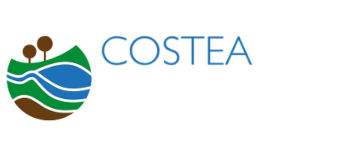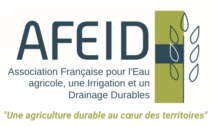Communal launderettes as a way to fight agricultural water pollution and create an additional source of water in rural oasis environments: the case of the launderette of Tabesbaste
Innovation field
Morocco/locality of Tabesbaste, rural municipality of Taghzout N'Ait Atta, province of Tinghir, Draa-Tafilelt region
Summary
The oases of Draa-Tafilelt suffer from a growing water shortage and an alarming deterioration in the quality of water resources, especially those intended for irrigation.
Faced with this situation, local initiatives have emerged to conserve the oasis heritage by protecting the quality of water used for irrigation and exploiting non-conventional sources of water. The most relevant example is that of Tabesbaste (Figure 1Figure 1). This project concerns a communal launderette designed to replace the traditional washhouses found directly on the wadi Toudgha or seguias (irrigation canals), which cause the chemical pollution of irrigation water.
The Tabesbaste launderette is also equipped with a mini purification system whose treated water is reused to irrigate a neighbouring plot via underground distribution.
Emergence of the innovation
In Tabesbaste, irrigation (based on water turns) and water sources are managed by the Association Tabesbaste pour le Développement et la Solidarité [Tabesbaste Association for Development and Solidarity].
In 2016, this association carried out a communal launderette project initiated and supervised by the association l'Eau Du Désert, which seeks to safeguard the oases and khettaras in the pre-Saharan areas of Morocco. This project was in collaboration with the local associations of several oases and other state partners.
For several years, the association of Tabesbaste has been looking for a solution to the problem of soil and irrigation water pollution in the oasis due to chemicals (detergent and bleach) from washing in the traditional washhouse located on the seguia of the douar, as well as the nauseating odours emanating downstream of this seguia. This situation persists in several douars of the valley (Figure 2).
The problem of the chemical pollution of waterways caused by washing laundry did not arise before because people used ancestral practices to wash their clothes in a natural manner, often with homemade detergents. As the villagers' standard of living has increased, the use of chemical detergents made from non-biodegradable petrochemical residues and composed of surfactants, most of which are toxic to humans and the environment, has become widely dominant. The use of ‘ecological’ detergents is still very limited due to the lack of awareness and commitment of families, as these detergents are more expensive than conventional ones. It should be noted that detergents always pollute to a greater or lesser extent, especially in the case of concentrated discharge (communal laundries), and therefore a preliminary treatment is always necessary before discharge into the natural environment.
Solution(s) provided by the innovation
Comme il a été expliqué précédemment, la lessive chimique pose un véritable problème environnemental. Tout au long de la vallée de Toudgha, on compte des dizaines de villages de population plus ou moins importante (jusqu’à 5 000 EH dans certains villages d’après le recensement de 2014). Le nombre de lavages peut atteindre les 150 lavages par semaine et par douar, ce qui représente approximativement 8 tonnes de lessive et 4 000 litres d’eau de javel par an et par douar, déversés dans l’eau d’irrigation (estimation basée sur des ratios de consommation de 1 kg de lessive/lavage et 0,5 litre d’eau de javel/lavage).
The Tabesbaste project is considered to be a comprehensive ecological project as it incorporates an autonomous sanitation system that ensures the three functions of collection, treatment and reuse (Figure 3 & Figure 4):
- Les eaux grises collectées des dix machines à laver de la laverie sont acheminées vers un filtre à paille qui assure un prétraitement de l’effluent ;
- Le filtre à paille est placé dans un regard d’alternance mené de deux vannes manuelles qui assurent l’alimentation alternée des filtres ;
- Les eaux sont ensuite acheminées vers deux filtres verticaux étanches, plantés de Papyrus Cyperus, fonctionnant alternativement ;
- The effluent is finally distributed in an infiltration plot near the launderette via four horizontal buried trenches. This plot is planted with fodder plants for animal feed which also complete the phytodepuration initiated at the vertical filters.
During our visit on 16 June 2021, no odours were detected. Visually, the turbidity of the effluent at the outlet (inspection hole outside the facility, placed between the vertical filter and the plot) shows that the treatment allows a better elimination of suspended matters (Figure 5 & Figure 6).
Depuis la mise en œuvre de la laverie de Tabesbaste, elle a permis de maintenir une agriculture durable dans la localité : une dépollution progressive des eaux d’irrigation et des sols a été remarquée par les habitants de Tabesbaste peu de temps après la mise en service de la laverie. Ainsi, il a eu une diminution de la moitié du volume d’eau potable consommé dans le village pour le lavage des vêtements à la maison.
History of evolution since emergence (implementation on the field)
Since 2012, several laundry projects similar to that of Tabesbaste have been initiated in some of the region's douars (Izilf, Taltfraout, Laâchouria), and others are planned.
Since the launderette was commissioned in 2016 and the grey water treatment system installed, the major constraint has been the unsuitability of the plants used in the planted filters.
After trying several species and thanks to feedback from other similar projects in the region, Cyperus papyrus has proven to be the most tolerant to the conditions of the area and to the toxicity level of the water, and it is this plant that is currently used for the launderette (Figure 7).
Users' opinions / elements of acceptance of the innovation
The Tabesbaste project is widely accepted by the inhabitants and even tourist establishments of the area as it offers a unique service with a better price/quality ratio.
It should also be stressed that this project encourages female participation in income generation and management. The project is currently managed by women, and in addition to its main role, it acts as a meeting and exchange place for the women of the village.
According to the testimonies of the people we met during our surveys, the project has also provided a solution to the pollution problem identified at the outset and reduced water consumption.
Economic assessment of the innovation
The main elements of the economic assessment of this innovation are:
- La création d’emplois : la mise en place de la laverie a permis la création de deux emplois féminins stables et des emplois occasionnels (transports, maintenance des machines, …).
- The generation of income for the association to fund capacity building activities for local women.
- L’amélioration de la santé et l’épanouissement des femmes du douar : toutes les femmes du village ramènent leurs lavages à la laverie, moyennant un prix symbolique de 10 DH pour 10 Kg. En plus des vêtements, la laverie propose également le lavage des couvertures. Avec l’abandon des lavages sur les séguias, les femmes sont soulagées de la pénibilité de ce travail et les risques de maladies dus à la fatigue et/ou aux allergies ont diminués.
- The improved environment of the douar enhances its attractiveness and creates an environment conducive to the development of ecotourism.
Conditions for the dissemination of the innovation and replicability
The concept of collective laundries will work well on a rural scale, and more specifically in areas that suffer from a lack of water resources and where the population density is high.
This innovation not only prevents water resources from deteriorating but also ensures that the water can be reused after treatment, albeit in a restrictive manner (trees and crops used in cooking).
The phytodepuration solution seems to be adequate for small units (laundries and tourist establishments) located in areas where the water table is at low depths because deep infiltration is not recommended. However, this technique obviously has certain limitations that reduce the performance of the system. The main ones are: (i) the absence of well-developed studies at the national level that inventory efficient plant species adapted to oasis and pre-Saharan environments, (ii) significant water losses due to the high climatic demand in arid areas, and finally, (iii) significant maintenance costs to unclog filters and renew plants (these costs are even higher if black water is treated and/or if the number of equivalent population served is high).
In order to reuse wastewater, more efficient facilities enabling a higher level of treatment, such as anaerobic reactors (compartmentalised anaerobic reactor, two-step up-flow anaerobic reactor, upflow anaerobic sludge blanket, anaerobic filter, sand filter, etc.) are necessary. Phytodepuration can be presented as a tertiary treatment.
The assessment of the concerns of the Toudgha valley’s inhabitants with regard to sanitation showed a lack of knowledge about the reuse of treated water. Thus, before the implementation of any reuse project, meetings and training activities are necessary to allay fears as to the risks and to better inform the inhabitants about wastewater treatment and recovery practices.
The Tabesbaste pilot project and the way in which the resource is preserved in this locality can serve as models to inspire and reproduce similar small-scale treatment and reuse experiences, motivated by the population’s own initiative.
Associated risks, negative externalities
The risks associated with the launderette project, which could impede its durability, can be summarised as follows:
- The implementation of a communal launderette must firstly consider the inhabitants’ acceptance of the concept.
- The managers of the launderette and association volunteers need to be trained to better manage and maintain the water treatment system.
- To ensure the project’s sustainability, the tariffs must be adapted to the villagers' low financial means.
Additional documentation
Hajar TAOUILE & Khalid AZARHOUN, Mémoire de fin d’étude « Identification de sites de collecte, de traitement et de réutilisation des eaux usées et conception d’un projet pilote adapté aux zones oasiennes », Département de génie rural, Institut Agronomique et Vétérinaire HASSAN II, 2021
Aquatiris. (2015). ‘Système d'assainissement des eaux usées de la laverie de Ksar Izilf’ [Wastewater treatment system of the Ksar Izilf laundry facility] - Study carried out by Thibaut Demaegdt, Bureau d'étude en assainissement spécialisé en phyto-épuration, member of the Aquatiris network.
Association L'Eau Du Désert: https://leaududesert.herokuapp.com https://leaududesert.herokuapp.com




Leave a Reply
Want to join the discussion?Feel free to contribute!